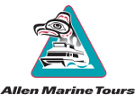Overview: Juneau, Alaska’s beautiful capital city, is the third largest city in the state, with a population of just over 30,000 people. Even though the municipality of Juneau encompasses an area almost as big as Rhode Island and Delaware combined, the city’s downtown is surprisingly small, nestled at the base of towering peaks overlooking the Gastineau Channel. Juneau boasts an incredible variety of attractions and activities including: museums, galleries, fine dining, great fishing and hiking, and probably the best whale watching waters in the state.
Location: Juneau is situated near the northern terminus of the Inside Passage, and is entirely surrounded by wilderness; massive glacier icefields to the north and east, and ocean channels to the south and west. Juneau is the only U.S. capital that is not accessible to any other community by road. The only way to get to Juneau is by sea or air. The nearest road connections to the rest of North America are found in Haines (73 miles north) and Skagway (85 miles north).
Climate: Juneau has an oceanic climate, cooler and wetter than Seattle. Annual precipitation varies greatly: downtown Juneau receiving over 90 inches while the residential Mendenhall Valley, just 9 miles north, receives less than 60 inches per year. The average summer temperature is about 65°F and the average winter temperature is about 25°F. Because of the chilling influence of the nearby icefields, Juneau receives more snow than most coastal communities in Southeast Alaska.
